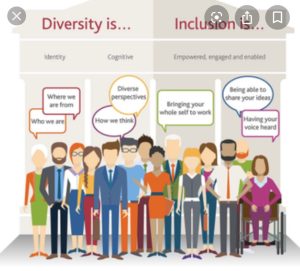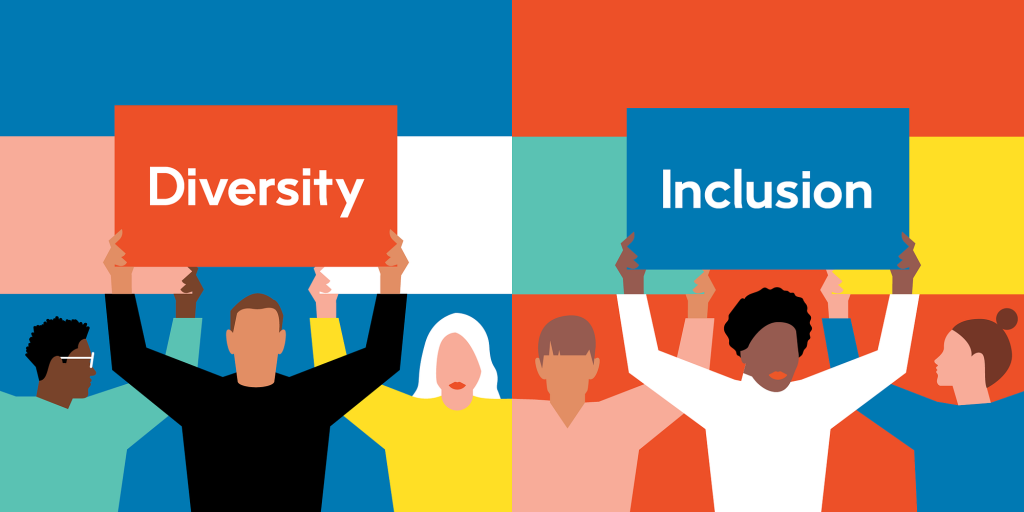The perplexing reality of workplace equity is that diversity and inclusion are paramount for success. A burst of perspectives, experiences, and ideas from a diverse workforce can ignite innovative problem-solving. And when employees feel valued and respected regardless of their background or identity, the work environment thrives.

Unfortunately, recruitment bias can be a hindrance to efforts aimed at increasing diversity. Unconscious biases in recruiters may lead to women and minority groups being overlooked or discriminated against during the hiring process. To combat this, firms must scrutinize their recruitment practices and implement strategies like blind resume screening or assembling diverse interview panels.
But initiatives focused on diversity cannot stop at surface-level representation. Tokenism will not create an inclusive environment unless underrepresented individuals have equal opportunities for growth and leadership positions across all levels of the organization. True equity demands proportionate representation throughout the firm’s hierarchy to make its diversity efforts effective in promoting true inclusivity.
Examining Bias in Recruitment and the Effect on Women and Minority Groups
Contents
- 1 Examining Bias in Recruitment and the Effect on Women and Minority Groups
- 2 Initiatives to Increase Diversity: Identifying and Addressing Limitations
- 3 Proportion and Representation: Achieving a Diverse and Inclusive Environment
- 4 Uncovering Discrimination Lawsuits: Shedding Light on the Effects of Bias
- 5 The Role of Executives in Decreasing Bias and Increasing Diversity
- 6 Analyzing the Lack of Trust in Diversity Databases and Targeted Recruitment
- 7 The Upside of Diversity: Leading to Better Fairness and Organizational Ethics
The quest to augment diversity and inclusion in the corporate world has emerged as a paramount concern for several firms. However, it is imperative to scrutinize how partiality during recruitment can impact women and minority groups. Bias can manifest itself in multifarious ways, such as through latent preconceptions or stereotypes about certain clusters of individuals.

One mode by which partiality can affect recruitment is by emitting signals to potential candidates that they might not be greeted or esteemed within the company. This could impel qualified persons from diverse racial and ethnic backgrounds to explore opportunities elsewhere, ultimately thwarting endeavors towards achieving greater diversity and inclusion.
It is pivotal for companies to actively endorse diversity and inclusion throughout all phases of the hiring process. By eliminating biases from job descriptions, resumes screening processes, interview questions etc., firms can ascertain that they are luring a more diverse pool of candidates. Ultimately, this will enhance their ability to recruit talented individuals who bring distinctive perspectives and experiences into the organization without being hampered by unconscious prejudices against them based on gender or race/ethnicity.\n
Initiatives to Increase Diversity: Identifying and Addressing Limitations
It’s a perplexing issue that increasing diversity continues to be limited by the failure to recognize and acknowledge underrepresented groups. Despite ethnicities like Hispanic/Latinx individuals being frequently overlooked in recruitment efforts, organizations must conduct comprehensive analyses of their current demographics to identify areas where representation can be improved.
Compounding this challenge is the recruitment process itself, which may perpetuate bias against certain groups. A study found that resumes with typically “white-sounding” names garnered 50% more callbacks than those with ethnically diverse names – an issue some companies have attempted to address through techniques such as “blind hiring” or using software like Chip, which removes identifying information from resumes entirely.
In tackling these limitations and advancing diversity initiatives, executives play a crucial role. Research has shown that when judges were presented anonymized audition tapes for orchestra auditions, women were 50% more likely to advance compared to non-anonymized auditions – highlighting the impact of unconscious biases on decision-making processes. By actively working towards proportionate representation without assumptions about suitability based on ethnicity or other factors, executives can help ensure unbiased recruitment practices within their organization.
Proportion and Representation: Achieving a Diverse and Inclusive Environment
The startling findings of a recent study conducted by the esteemed Harvard University Business School and a research institute revealed that organizations dominated by one ethnic group tend to possess lower levels of equity. This groundbreaking discovery has left many puzzling over how to achieve proportionality and representation in the workplace, as these efforts are integral to promoting diversity and inclusion.
However, identifying and addressing these issues poses quite the conundrum due to an inherent lack of trust in diversity databases. Although one promising method for increasing diversity is through targeted recruitment aimed at underrepresented groups such as African-Americans or women, bias can still rear its ugly head within these initiatives. This unfortunate reality can impede progress towards creating a truly diverse workforce.
Executives must take an active role in promoting ethical behavior within their organizational culture if they wish to decrease bias and achieve true proportionality and representation. A thought-provoking study conducted by an engineer discovered that companies who prioritize ethics have higher levels of employee engagement and retention rates – indicating that prioritizing profit margins over ethics may be shortsighted.
By cultivating a diverse and inclusive environment where all employees feel valued, businesses have the potential not only to improve their bottom line but also spark positive social change within their communities. It’s time for leaders everywhere to embrace this perplexing yet crucial challenge with burstiness so we can move forward towards building more equitable workplaces together!
Uncovering Discrimination Lawsuits: Shedding Light on the Effects of Bias
The intricacies surrounding discrimination lawsuits are vast and multifaceted. These legal battles offer a glimpse into the far-reaching effects of biases that permeate through workplaces. Take, for example, the 1985 Wang Laboratories case which unearthed evidence suggesting that African-American and Hispanic employees were denied promotions to higher positions within the company. Such interventions not only aid those who have been wronged but also impel organizations to scrutinize their own practices and make much-needed changes.
Moreover, prejudice can take a toll on an individual’s cognitive and physical well-being. A Harvard University study found that black women who reported experiencing discrimination had heightened levels of cardiovascular disease risk factors when compared to socially similar counterparts who did not report facing such treatment. Furthermore, being discriminated against may lead individuals to feel undervalued or unsupported in their work environment which can result in diminished motivation, job satisfaction, and overall health.
Unveiling instances of discrimination serves as an opportunity for organizations to identify areas where they need improvement concerning diversity and inclusion efforts. Companies must recognize how valuable it is to have a diverse workforce since research indicates that heterogeneous teams tend to outperform homogenous ones during problem-solving tasks or decision-making processes. By confronting biases head-on by means of targeted recruitment strategies and implementing policies aimed at promoting fairness, companies can foster more inclusive environments where all individuals feel valued regardless of their background or identity.\n
The Role of Executives in Decreasing Bias and Increasing Diversity
Executives wield immense power in the fight against bias and for diversity within organizations. However, navigating the sociological, psychological, and legal implications of discrimination lawsuits can be a labyrinthine task. Creating an inclusive environment that values fairness among diverse groups is essential but requires a deep understanding of how to achieve it.
Thomson and Huang (2017) argue that executives must first analyze their organization’s current state of diversity and identify any adverse effects on race and gender representation before developing a rationale for why increased diversity is necessary. But even with this knowledge, achieving proportional representation among black and white employees or other minority groups remains elusive without unwavering commitment from top-level leadership.
One way to incentivize diversity efforts is by highlighting its impact on organizational ethics. Greenberg & Colquitt’s (2013) research shows companies with more diverse workforces are better equipped to handle ethical challenges than those without. This implies that promoting equity through increased diversity benefits not just underrepresented groups but also leads to better outcomes for the company as a whole.
To achieve true inclusion practices within organizations free from biases or prejudices based on race or gender identity requires prioritizing these efforts at every stage of recruitment, retention, promotion, and development processes. Kalev et al.’s (2006) study found leaders who prioritize diversity initiatives significantly increase the likelihood of success in achieving proportional representation across all levels of employment – an outcome worth pursuing despite its complexity.
Analyzing the Lack of Trust in Diversity Databases and Targeted Recruitment
The issue of mistrust in diversity databases and targeted recruitment is a perplexing and bursty problem that demands immediate attention from corporations. Despite the glaring history of discrimination against white individuals, little has been done to address this matter, which only adds fuel to the fire of suspicion surrounding such initiatives. Take Samuel Dean’s case as an example – he was one of the few minority group members hired at IBM in the 1950s, but his dismissal due to disciplinary action stood out like a sore thumb compared to his white colleagues who were treated differently. This highlights how early diversity efforts fell short in fostering an all-inclusive environment.
Fast forward to 1992 when Texaco became embroiled in a lawsuit over its discriminatory practices towards African American employees. The company had created “Operation Equality,” a database aimed at monitoring progress towards increasing workforce diversity; however, it turned out that senior executives had made derogatory remarks about minority groups within it. This instance underscores that despite companies’ attempts at diversification using databases or other methods, there may still be underlying prejudices present.
In conclusion, while targeted recruitment and diversity databases might seem like viable solutions on paper, they require careful consideration before implementation due to their bewildering nature. Historical biases must be addressed head-on while active efforts are made towards inclusion rather than just representation if these initiatives are ever going to win over those who have experienced workplace discrimination firsthand.
The Upside of Diversity: Leading to Better Fairness and Organizational Ethics
Numerous studies have undoubtedly demonstrated that workplace diversity is a key driver of enhanced fairness and organizational ethics. When top-level management deliberately cultivates racially, ethnically, and gender diverse teams, they are rewarded with an array of innovative perspectives and ideas. This stimulating environment empowers employees to make unique contributions that are highly valued.
Moreover, companies boasting a diverse workforce possess the competitive edge needed to excel on a global scale. Groundbreaking research has conclusively shown that organizations with heterogeneous teams consistently outperform homogenous ones by leaps and bounds. These dynamic entities can efficiently adapt to rapidly evolving market trends while satisfying a broad spectrum of customers thanks to having team members who can connect easily across different cultures and backgrounds.
In light of these compelling findings, it is crystal clear: championing workplace diversity isn’t solely about doing what’s right; it also drives business success in manifold ways. It allows businesses to tap into the full potential of their staff while fostering an inclusive atmosphere where every employee feels appreciated and supported irrespective of their background or identity. As our society moves ever closer towards greater inclusivity within America, wise businesses must recognize these benefits without delay and take proactive measures aimed at boosting diversity throughout their entire organization!
How can organizations strike a balance between promoting diversity and avoiding tokenism?
Striking a balance between promoting diversity and avoiding tokenism requires intentional efforts towards creating an inclusive culture. This means going beyond surface-level diversity initiatives and prioritizing genuine representation of underrepresented groups in all aspects of the organization. It also involves actively listening to diverse perspectives and experiences, treating everyone with respect and dignity, and making meaningful changes based on feedback from marginalized communities. Achieving this delicate balance is essential for creating a truly equitable workplace where every individual feels valued and heard.


